The 50 States Project is a series of candid conversations with interior designers across the country about how they’ve built their businesses. This week, Indianapolis-based designer Anissa Zajac of House Seven Design tells us how living in 10 homes has shaped her approach, why she closed a successful e-commerce site to focus on her firm, and why she sees staying in her lane as a strength.
What led to the decision to launch your firm?
I was home with a brand-new baby at the time, and we had moved into our seventh house—that’s where the firm’s name, House Seven, came from. Real creative, right? I had been writing a blog for years about sewing projects like making kids clothing and hair clips, which was more of a creative release for me while staying home with my kids. When we moved into that house in 2015, I didn’t have time to sew anymore. But my husband at the time and I had started remodeling the house and I thought, “I’m just going to start writing about design.”
Around that time, I found Instagram. That’s when I realized that even if I didn’t have time to write full blog posts, I could post a snapshot from my phone and a little blurb about what I did with the room—and that is what started gaining traction. People were reaching out to me from all over the country saying, “I’d like to hire you.” And I was like, “Oh, no, sorry. I’m not an interior designer. I just do this for fun.” I have always been interested in interior design, but I grew up in a small town where nobody had an interior designer. I didn’t even know it was an occupation until I was a lot older. By that time, I wanted to be one, but I didn’t have a degree in design and I felt like a fraud.
What changed your perspective?
My cousin, who I was really close to, like a big brother, passed away suddenly from a brain tumor. He was 36 years old, and he was gone within a couple months of finding out that he had it. I remember thinking, “He had no idea he was going to die—even three months ago, he didn’t know.” It was so sudden, and it gave me a little bit of a jolt: Life’s really short, and the rug can get pulled out from you at any time, so why am I denying myself something I want to do? Because no one was telling me I couldn’t do it but myself.
What were the first steps you took to establish the business?
I just had some business cards made and set my rate at $25 an hour.
Oh, no.
I didn’t know! I started figuring it out as I went. It started with small consultations in people’s homes—picking out an entry rug, wallpaper, that type of thing. But the more my Instagram gained traction, the more the jobs came in, and the bigger they became. I ended up hiring somebody just to answer my emails because I couldn’t keep up [with inquiries about] collaborations from companies and brands and also from potential clients.
Was that your first hire?
It was. She was my main project manager and assistant for a long time, and she grew with me from the very beginning. It felt more like she was my partner than my employee. And she never dropped the ball—except one time, when she ordered $3,000 worth of the wrong lights, but convinced the client that these were actually better than the first ones.
But it wasn’t until 2019 that somebody said, “You should start an LLC and make this a real business,” so I did—and then I hired a few employees to help me with programs like CAD and SketchUp, which I didn’t know how to do. I went to Chicago and took a three-day class on SketchUp, but on the second day, I closed my computer and was like, “My brain doesn’t work like this anymore, so I’m going to hire people to do this for me.” I’m a big believer in staying in your lane: If there is something that you’re not good at, then get somebody who is. I knew that I was good at design, and the feedback I was getting was great. I even shot an HGTV pilot. Nothing ever happened with it, which was great, because what I learned from it was that I don’t want to do TV. I just want to do design.
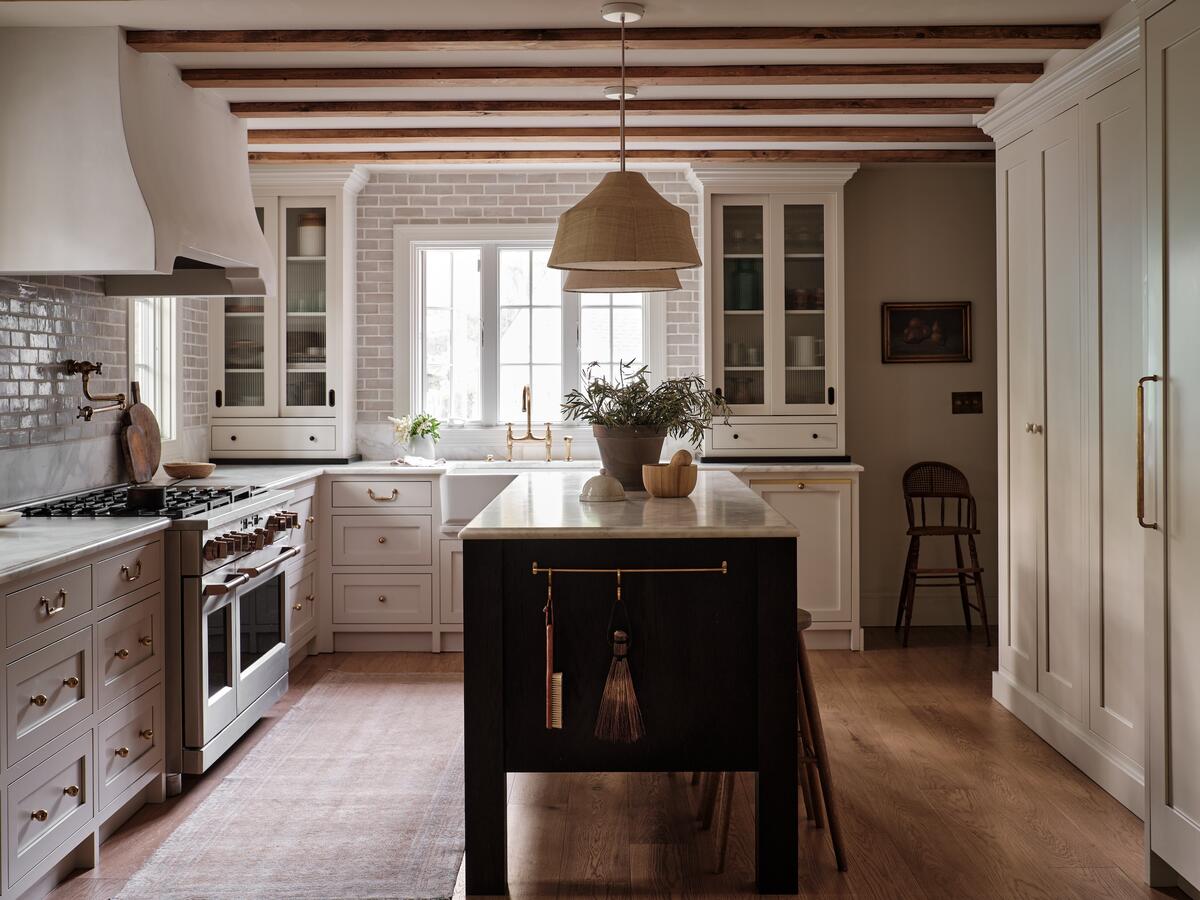
How did the business evolve from there?
We moved and put an office in our eighth house, but I remember thinking, “My kids are getting older, and I’ve got employees and clients coming in and out of my house all the time. I really want to get my business out of the house.” So I found an office lease through [an old contact]—someone I’d worked for in her restaurant years before—and this spring, it’ll be five years that we’ve been in the space.
How did the office change the way you worked?
I decided I was going to have a brick-and-mortar [store] at the front and then the office in the back. I was excited about having a shop, and I thought that if it could make enough every month to cover the rent, I would feel more comfortable with [the lease]. We opened the shop on February 14, 2020.
Just in time for the pandemic.
The shop was open maybe two months before I had to close my doors [due to lockdowns]. I had wanted to take my time creating an e-commerce site that was all glossy and perfect, but I suddenly had a shop full of inventory and didn’t know how I was going to manage my rent. So my assistant and I came into the shop with a piece of white drop cloth to put the products on, took all the pictures with my iPhone, and started a Shopify e-commerce site literally overnight. And it worked! I think we sold 200 products in the first hour.
Did that ease your fears?
Well, then I was like, “OK, how do we ship this stuff?” Looking back, I would maybe suggest figuring that out ahead of time. I’ll be honest, a lot of things got broken in those first few shipments, and we had to replace them. But we figured it out and ended up having a successful e-commerce site for about two and a half years. I wouldn’t say I was making tons of money, but I was making money, and it was definitely sustaining the rent.
I didn’t realize what a monster e-commerce can be, or how time-consuming it was. I was constantly getting pulled away from design to run the site and deal with customers. I was spending so much time on the shipping and logistics and trying to figure out how to dropship furniture. Not only that—I was hiring people to help me. I ended up with this team of 11 people and found myself managing all these personalities. It was like, Whoa, this is not what I wanted to do. I wanted to do design.
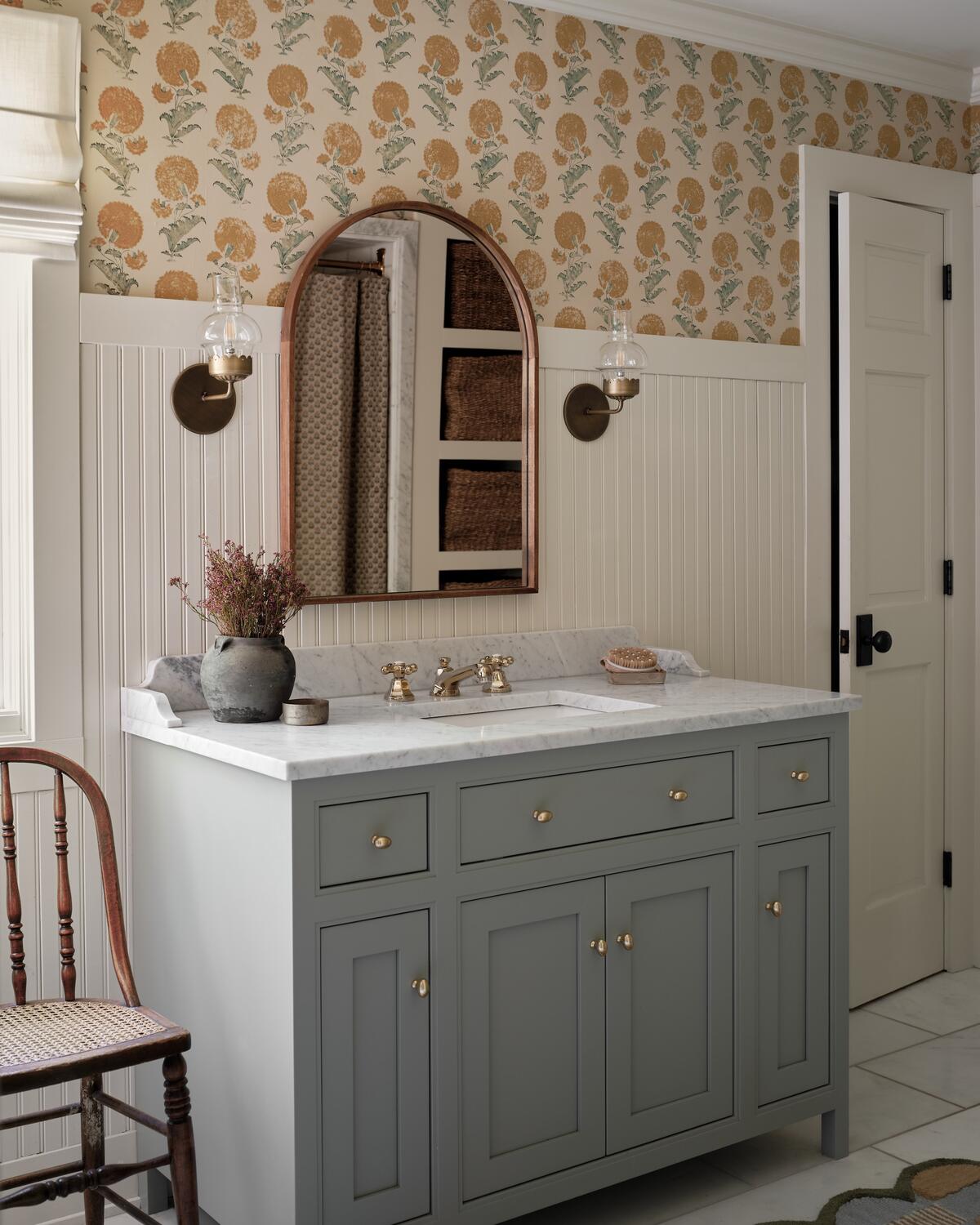
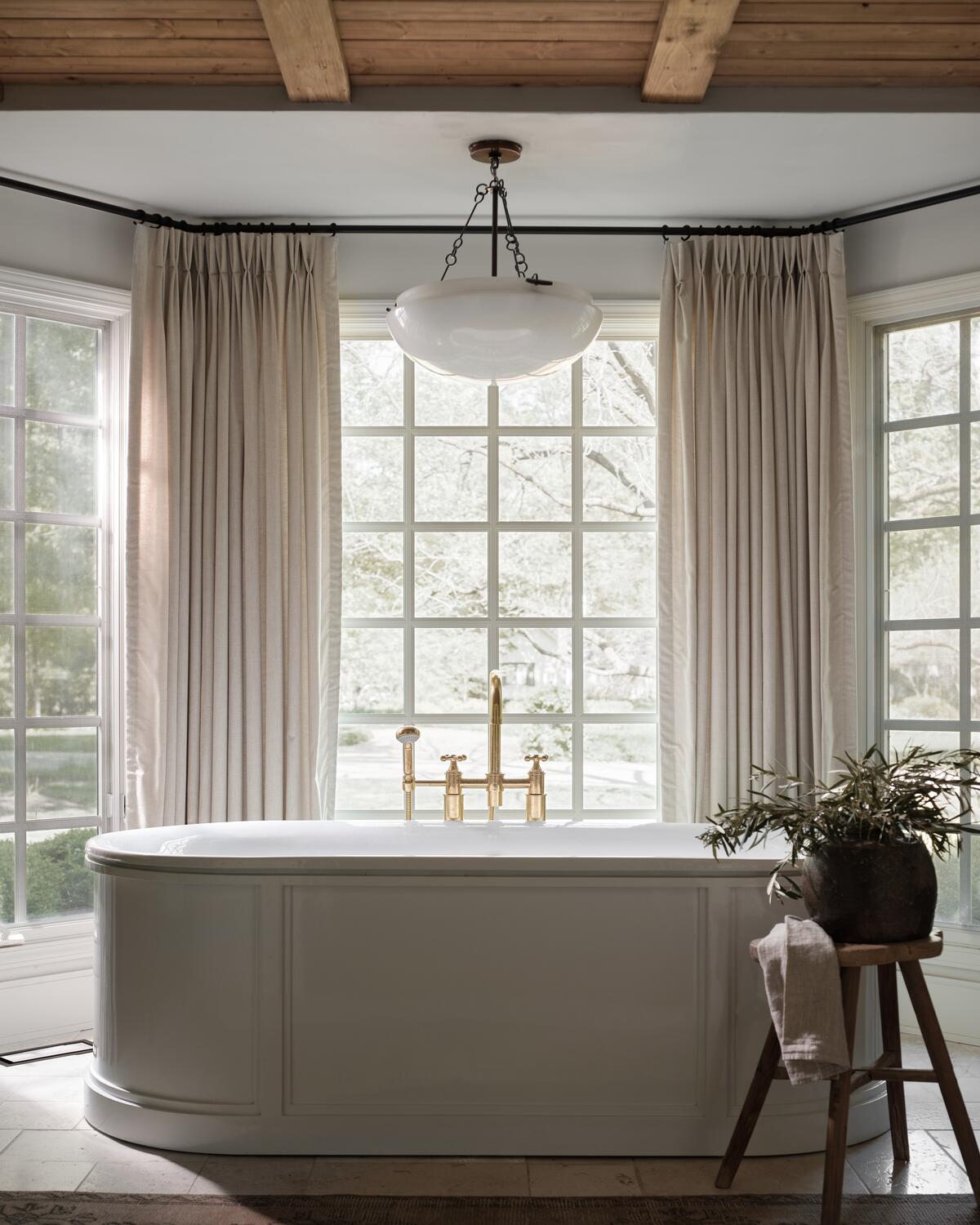
How do you unwind something like that?
I sat my main people down and we had a long discussion about it. We decided to shut down the e-commerce component, as well as close the brick-and-mortar store. The design business was growing, so we used the shop space for more desks and more designers.
There’s a longer story, though. After I grew the team, a couple of people left or moved to Chicago or got married, so I hired new people into those roles. My first employee, who was usually the support system for new people, [had stepped away] while her baby was in the NICU last year, and then she decided that she wanted to stay home with him, which I completely understood. But [after she left], the rest of the team kind of fell apart. I had never had a complaint the whole time I’d been in business, and suddenly I was getting complaints from clients about communication, or billing [errors]—and I was in the middle of a divorce. [My family and I] went on a trip that we had planned for a long time, and then I spent the whole time fixing [problems by] email. I literally called the office and said, “Do not respond to any more emails,” and ended up letting everybody go when I came back. That was in October.
I was by myself and I had four massive projects. I emailed the clients and just said, “Hey, I wanted to let you know that there’s some stuff going on here—I’ve let everybody on my staff go and I’m going to regroup, but please give me a couple of weeks.” They were all super cool about it. Every single one of them was like, “Don’t worry, we’re fine. You’ll get it done.” I still worked. I communicated what I could. And I’ve rebuilt the team since October—I found another project manager and assistant who is just as capable as my first one, and then I have two really solid designers.
Wow. How have these changes shifted your perspective?
I realized that hiring juniors just makes me have to manage people. The only reason I was hiring junior designers is because I was afraid of the salary I was going to have to pay a regular designer.
I’ve been hearing that a lot lately—designers making the pivot toward more senior employees. What makes it work for you?
For so long, hiring was a big thing for me: It’s scary to hire somebody at a certain salary, because you know you have to maintain it. But the way I run my business now, they maintain their salary—I’m clearly billing clients more per hour than what I’m paying them. I tell them, “Listen, this is what your salary is going to be, because I want you to be excited and I want you to feel appreciated. I want you to know that what you’re doing is valued. But here are your minimum monthly billable hours for you to retain your position.” I have those candid conversations with team members all the time—like, “Hey, if we can sell all this furniture, it’s going to be good for everybody.” It’s an incentive.
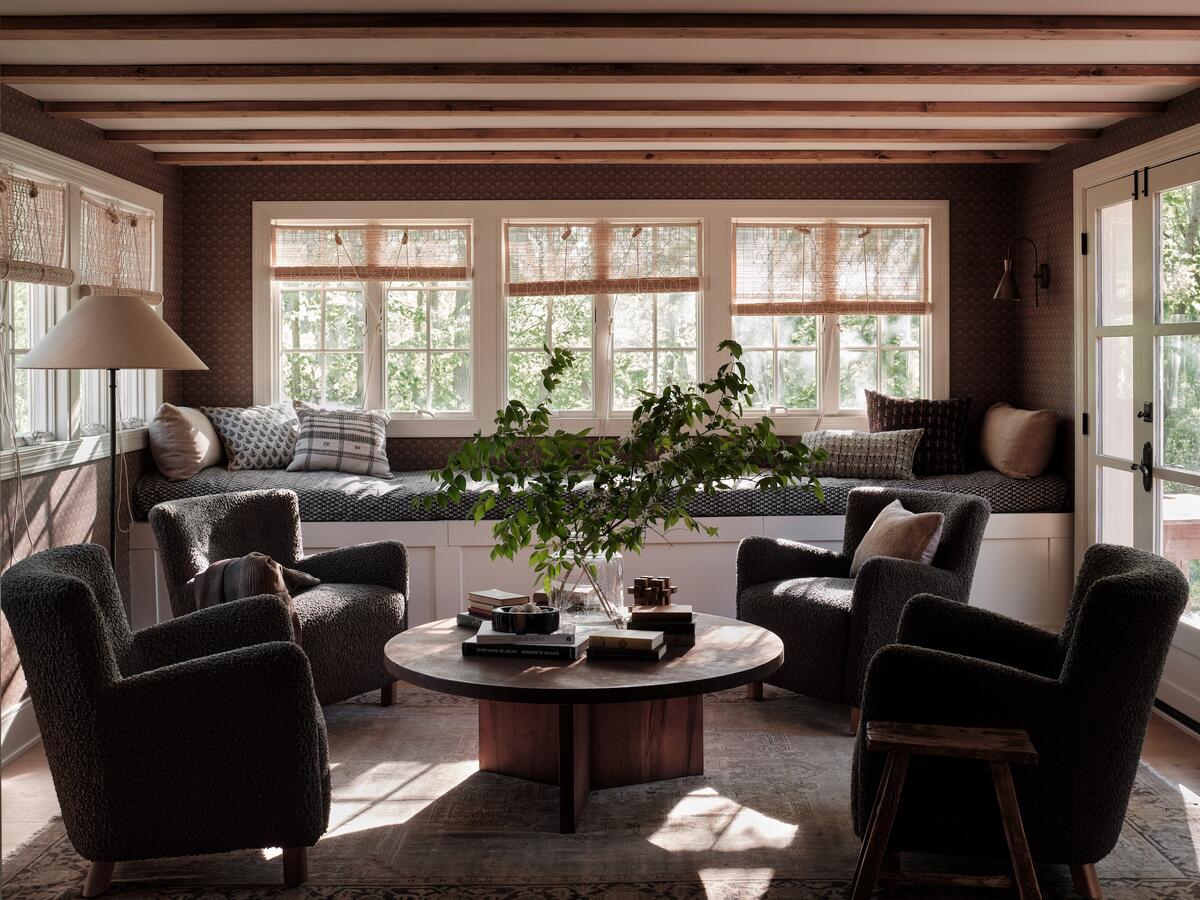
What are you looking for in a senior team member today?
I’ll be honest, it’s hard as hell in this city to hire designers who are good. I’ve met a lot of who come in for an interview, and when I ask them why they wanted to be a designer, they can’t really answer me. It’s so crazy to me—like they closed their eyes, pointed to interior designer [in a course book] and were like, “Sure, I’ll go to school for that.” And so many are not aware of other designers, or of brands.
What’s behind that lack of awareness?
I think it’s because the interior design schools in the area are really focused on commercial design. It’s a lot of Revit and creating workspaces—none of these kids are learning how to do interior design. The majority of them don’t know what High Point Market is.
I’m in a group with other designers who all have their own businesses. There are 10 of us, all very successful—and not one of us has an interior design degree. I realized not too long ago that I’d been looking for the wrong people. Yes, we have to have people who can do CAD and SketchUp, but I need to find the people who are passionate about design and also went and learned how to do the programs. Sometimes I’ll ask [job candidates] to tell me about their room when they were a kid, because I want to hear things like, “Well, I rearranged my room, and I was really excited about this wallpaper.” That, to me, is what makes a good designer.
Until I really had a good grasp of what I needed from my team, I couldn’t ask the right questions in the interview. It was generic interview questions, [then I’d think,] “You seem cool, let’s hang out.” Then they get in and I’d realize, “Oh, you don’t come to work on time,” or “You didn’t finish your project.” It was not working for me.
I like to talk to people, and sometimes I can turn an interview into a chitchat session. I know that about myself, so now after I interview people, I have them do a phone call with my assistant. If we decide we want to have them come in, they interview with me and my assistant, and then they do a Zoom interview with the person who handles my finances. She [assesses] if they know how to bill or how to mark up, and then she gives me her feedback. Only then am I making the final decision. That’s how I hired everybody who is currently with me, and so far, it’s been pretty good.
Who else is on the team now?
A project manager, two other full-time designers, and a couple of part-time people who come in to keep the back room organized—we still carry a decent amount of product in the shop—and to keep the office pretty and presentable. We’re back into a groove.
How much of a shop environment did you maintain?
We’re an interior design business, not a shop, but I like to have products for our clients to touch and feel, along with the samples. Also, we’re in Indianapolis—there are not exactly a lot of places to source interior goods, so I didn’t want someone to have to be a client to purchase a lamp or pillows. Carrying some smaller items gives it the feel of a neighborhood shop, where people don’t feel intimidated. I don’t want anyone to think, “It looks so pretty in there, but it’s an interior design shop, and I don’t need interior design.” We’ve actually gotten clients because they were able to come in and see things and I got to talk to them when they walked in the door.
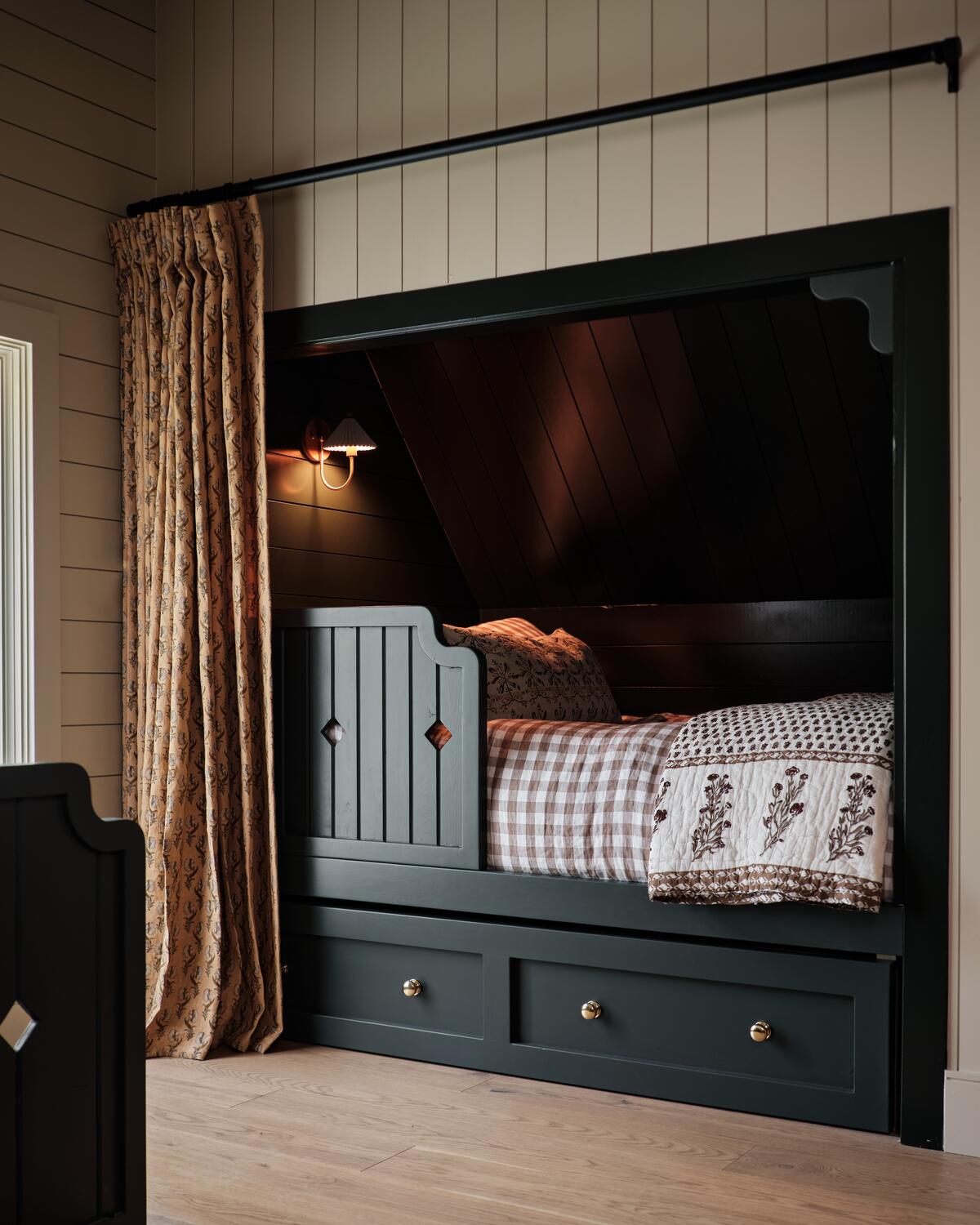
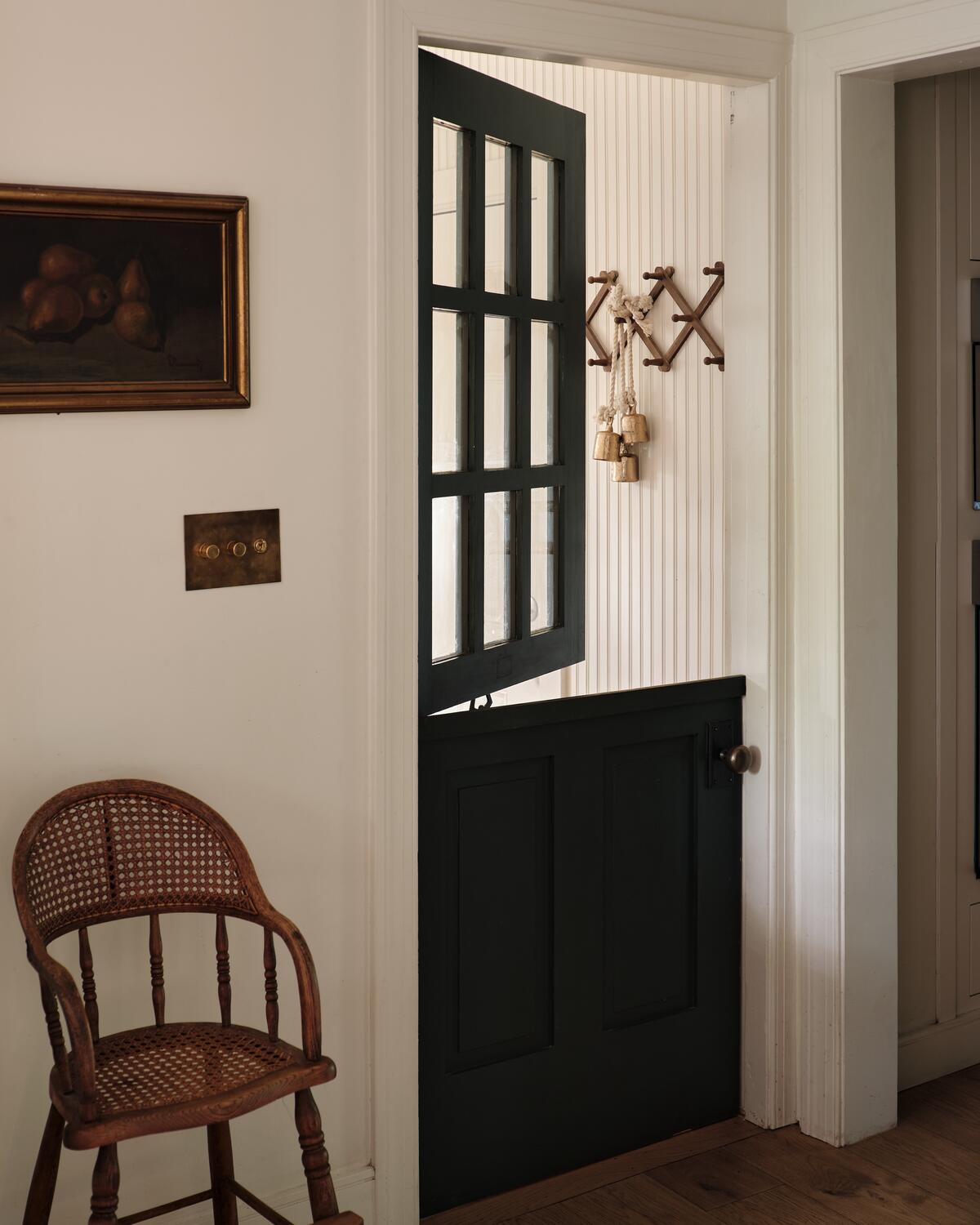
What is it about the local design scene that shapes the way you work?
Our office is in one of the older neighborhoods in the city, about 10 miles from downtown Indianapolis. It’s the area where people built their country homes in the 1920s—a short drive from downtown now, but it took a lot longer by horse and buggy. The homes are gorgeous, and sometimes I get lucky enough to remodel one, or to build one that’s similar to one of these. That’s our niche, and it’s why I wanted to be located where we are.
There are a lot of new builds happening in more suburban areas of Indianapolis, maybe 40 minutes away—golf course communities and things like that—and those drive a lot of the design community here. But many of those newer neighborhoods also seem to have a lot of designers that come from furniture stores.
RH just put down really big roots in Indianapolis with a new gallery.
I don’t know what they got the property for, but it was $14 million when it went on the market. It belonged to Christel DeHaan, who was a massive philanthropist in the city; when it went up for sale, people speculated that the estate would get donated to Butler University or something like that. And then RH came in and purchased the property. I was actually invited to be one of the hosts at the opening.
One of my biggest competitors in the city is Restoration Hardware—and getting people to understand that there’s a difference between an interior design firm and a retailer that offers design services. A lot of people are confused about that. And honestly, there is not as much of a request for interior design here because people aren’t trying to achieve a certain level of design. They’re like, “I bought this really expensive house and filled it with Pottery Barn furniture, and it’s amazing.” They’re just not there.
Are you doing work elsewhere, then?
My biggest clients are typically out of state. I’m working with a young couple that is building this amazing home about 40 minutes from our office, out between here and Chicago, and then I have another large job in Chicago and a couple in Florida. The big ones right now are not in Indy.
What kinds of resources are available locally, and how does that impact the way you source and shop?
We have Ferguson, Lee Supply, Pottery Barn, and now RH. We have retail, but we don’t have workrooms. It’s taken me a long time to find a good upholsterer or drapery person—and I literally have only one person for each of those things. There’s no place to take a client to see lighting. It’s pretty barren.
We source everything online—either we order in samples or we actually go to Los Angeles or New York to look for items for clients. I’m always like, “Can you imagine what it would be like if we could actually do design by seeing the products in person?”
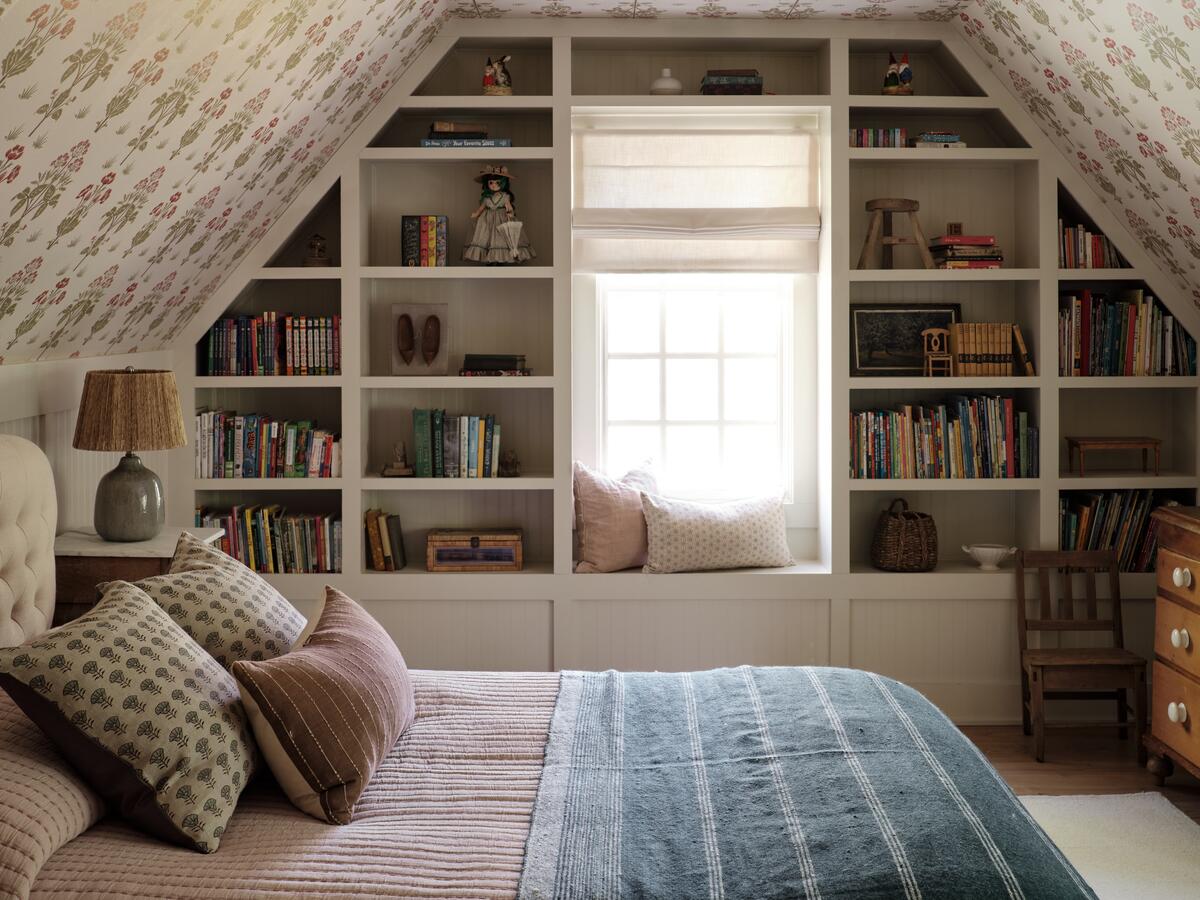
I know you aren’t charging $25 an hour anymore. What gave you the confidence to start changing how you charged?
I hired a finance person six months ago. It’s a company that has subcontractors who handle the operations and finances just for interior design firms. That’s been huge, because I tried to get other people in that role in the past and they didn’t understand the process. They didn’t understand that while we might take in a large amount of money, that’s not profit. We’re using it to pay for all the furniture—it’s not ours to keep! Our new finance person is very hands-on with everything. We meet once a week, and she works with my project manager on a weekly basis as well, which has been so helpful.
Beyond that, I’ve always charged hourly. I’ve never had a problem charging hourly. My belief is this: I’ve set my rate because that’s what maintains my payroll and my rent and my business expenses, and I communicate it to the client from the very beginning. I tell them, “We’ve done this long enough that we can tell you roughly how much we charge per square foot for your home—so if you come to us with a 10,000-square-foot home, I can basically tell you what you’re going to pay in design services over the course of one year. We will bill you monthly based on the hours that we worked, but it will probably come out to about this much. If the scope of the project changes and we notice we’re billing more because of it, we will bring that to your attention.” I am a huge believer in communication and in setting expectations. I don’t like surprise bills, so I don’t want to give clients surprise bills. But if the client is aware of the expectations at the very beginning, they never have a problem paying their bill.
What does success look like for you?
I want to be the best, you know? That doesn’t necessarily mean I want to be better than other designers in my community. I just want to be the best at what I’m offering. We’re so lucky that we get to leave a mark on all these different homes. We’re not just putting furniture in houses—these are their kids’ memories. They’ll remember that sofa when they’re older. Maybe they won’t, but I remember the sofa from when I was a child and what an impression the inside of my home gave me. I feel like that’s success.
To learn more about Anissa Zajac, visit her website or find her on Instagram.





























